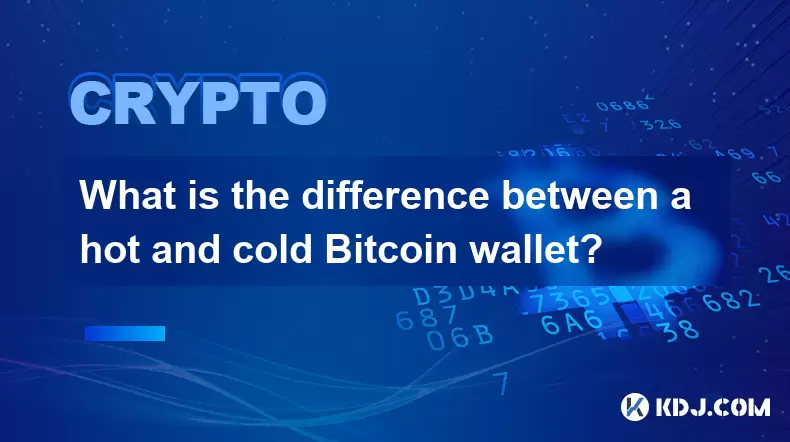-
 Bitcoin
Bitcoin $109,330.5032
0.89% -
 Ethereum
Ethereum $2,661.8271
3.39% -
 Tether USDt
Tether USDt $1.0006
0.04% -
 XRP
XRP $2.3808
4.11% -
 BNB
BNB $663.3047
0.75% -
 Solana
Solana $154.6074
2.96% -
 USDC
USDC $1.0001
0.02% -
 TRON
TRON $0.2876
0.47% -
 Dogecoin
Dogecoin $0.1736
2.37% -
 Cardano
Cardano $0.6105
5.06% -
 Hyperliquid
Hyperliquid $39.2542
4.13% -
 Sui
Sui $2.9702
3.11% -
 Bitcoin Cash
Bitcoin Cash $507.3879
0.84% -
 Chainlink
Chainlink $14.0303
3.57% -
 Stellar
Stellar $0.2912
14.83% -
 UNUS SED LEO
UNUS SED LEO $9.0547
-0.25% -
 Avalanche
Avalanche $18.6501
3.24% -
 Hedera
Hedera $0.1702
6.77% -
 Shiba Inu
Shiba Inu $0.0...01213
2.66% -
 Toncoin
Toncoin $2.8233
2.12% -
 Litecoin
Litecoin $88.6781
2.43% -
 Monero
Monero $321.5220
2.77% -
 Polkadot
Polkadot $3.5388
4.44% -
 Dai
Dai $1.0002
0.02% -
 Ethena USDe
Ethena USDe $1.0010
0.07% -
 Uniswap
Uniswap $8.2247
8.18% -
 Bitget Token
Bitget Token $4.3451
1.00% -
 Aave
Aave $298.6045
4.39% -
 Pepe
Pepe $0.0...01035
3.13% -
 Pi
Pi $0.4643
1.47%
What is the difference between a hot and cold Bitcoin wallet?
2025/07/09 16:14

Understanding Bitcoin Wallets
A Bitcoin wallet is a digital tool that allows users to store, send, and receive Bitcoin. It does not actually hold the cryptocurrency itself but rather stores the cryptographic keys—private and public—that are necessary for transactions on the blockchain. There are two primary types of Bitcoin wallets: hot wallets and cold wallets, each offering distinct features in terms of security, accessibility, and use cases.
The main difference lies in how they connect to the internet. A hot wallet is connected to the internet, making it more convenient for frequent transactions. On the other hand, a cold wallet remains offline most of the time, which significantly enhances its security by reducing exposure to online threats.
Hot Wallets: Convenience at Your Fingertips
Hot wallets are typically software-based and include web wallets, desktop wallets, and mobile wallets. These wallets allow instant access to your funds, making them ideal for everyday use or small amounts of Bitcoin you might want to transact regularly.
- Accessibility: Since hot wallets are online, they can be accessed from any device with an internet connection.
- Ease of Use: Most hot wallets come with user-friendly interfaces and integration options with exchanges and services.
- Speed: Transactions can be initiated quickly without needing to plug in external devices or manually sign transactions offline.
However, due to their online nature, hot wallets are more susceptible to hacking attempts, phishing attacks, and malware. Therefore, it's generally advised not to store large amounts of Bitcoin in a hot wallet.
Cold Wallets: Security First Approach
Cold wallets are offline storage solutions, commonly in the form of hardware wallets or paper wallets. They offer a higher level of security because they are not exposed to the internet unless explicitly used for a transaction.
- Offline Storage: Private keys never leave the device, making them immune to remote hacking attempts.
- Physical Control: Users have full control over their private keys and can keep them in secure physical locations.
- Long-Term Holding: Ideal for storing larger amounts of Bitcoin that are not needed for daily transactions.
While cold wallets are more secure, they require additional steps when sending Bitcoin, such as connecting the hardware wallet to a computer or scanning a paper wallet QR code.
How to Set Up a Hot Wallet
Setting up a hot wallet involves several straightforward steps:
- Choose a Trusted Provider: Research and select a reputable wallet provider like Electrum, Trust Wallet, or Coinbase Wallet.
- Download and Install: Download the wallet application from the official website or app store and install it on your device.
- Create a New Wallet: During setup, the wallet will generate a seed phrase (usually 12 or 24 words). Write this down and store it securely—it’s crucial for recovering your wallet if lost.
- Backup Your Seed Phrase: Never store your seed phrase digitally; instead, keep it in a safe, offline location.
- Receive Bitcoin: Share your public address with others or transfer Bitcoin from an exchange to start using your wallet.
This process should take only a few minutes and enables immediate usage of your Bitcoin.
How to Set Up a Cold Wallet
Setting up a cold wallet requires more attention to detail due to the need for offline security measures:
- Purchase a Hardware Wallet: Choose a reliable hardware wallet brand like Ledger or Trezor from an official source.
- Initial Setup: Connect the device to a trusted computer via USB and follow the on-screen instructions to initialize it.
- Generate Recovery Phrase: During setup, a recovery phrase will be displayed. Write it down exactly as shown and store it securely.
- Install Wallet Software: Some hardware wallets require companion apps (like Ledger Live or Trezor Suite) to manage transactions.
- Send Bitcoin to the Wallet: Use the receiving address generated by the hardware wallet to transfer Bitcoin from an exchange or another wallet.
When initiating a transaction, the hardware wallet must be connected and the transaction signed locally before being broadcasted to the network.
Choosing Between Hot and Cold Wallets
Deciding which type of wallet to use depends largely on individual needs and habits:
- Frequency of Use: If you trade or spend Bitcoin often, a hot wallet offers convenience and speed.
- Amount Stored: Larger holdings should be kept in cold storage to minimize risk.
- Security Awareness: Those comfortable with technical processes may prefer the added security of cold storage.
- Device Access: Users who frequently switch devices may find hot wallets easier to manage across platforms.
Many experienced users maintain both types—one for daily transactions and one for long-term savings—to balance usability and protection.
Frequently Asked Questions
Can I switch between hot and cold wallets?
Yes, you can easily move Bitcoin between hot and cold wallets by sending funds from one wallet to the receiving address of the other. This is a common practice among users who want to keep some funds accessible while securing the majority offline.
Is a paper wallet considered a cold wallet?
Yes, a paper wallet is a type of cold wallet where the public and private keys are printed on paper in the form of QR codes. While secure, they can be less convenient to use and are vulnerable to physical damage or loss.
Are all hardware wallets equally secure?
Not necessarily. While most reputable brands implement strong security protocols, it's essential to purchase directly from official sources and ensure firmware updates are applied regularly to protect against vulnerabilities.
Do cold wallets cost money?
Yes, hardware cold wallets typically range from $50 to $150 depending on the brand and model. Paper wallets are free to create but require careful handling and secure storage practices.
免責聲明:info@kdj.com
所提供的資訊並非交易建議。 kDJ.com對任何基於本文提供的資訊進行的投資不承擔任何責任。加密貨幣波動性較大,建議您充分研究後謹慎投資!
如果您認為本網站使用的內容侵犯了您的版權,請立即聯絡我們(info@kdj.com),我們將及時刪除。
- Nexbridge,Nexplace和比特幣生態系統:建立新的金融領域
- 2025-07-09 23:10:13
- MEXC LaunchPad&Pump Token:獲得40%的折扣?
- 2025-07-09 22:50:12
- 貿易系統革命:XDC和傳真的結束如何重塑金融
- 2025-07-09 23:10:13
- Ripple,Clarity Act和XRP案件:紐約加密法規的紐約分鐘
- 2025-07-09 23:50:12
- 沒有50盧比的硬幣?德里HC聽到為什麼印度更喜歡鈔票
- 2025-07-09 23:15:11
- 沒有50盧比的硬幣?德里HC聽到為什麼鈔票統治至高無上
- 2025-07-09 23:50:12
相關知識

How to identify a volatility contraction pattern on Bitcoin using indicators?
2025-07-07 07:28:27
<h3>What is a Volatility Contraction Pattern in Bitcoin Trading?</h3><p>A volatility contraction pattern refers to a phase where the...

Do indicators work better on a logarithmic or linear scale for Bitcoin's long-term chart?
2025-07-08 13:42:39
<h3>Understanding Chart Scales in Cryptocurrency Trading</h3><p>In cryptocurrency trading, particularly for analyzing Bitcoin's long...

What is the Woodies CCI indicator and can it be used for Bitcoin?
2025-07-04 17:14:44
<h3>Understanding the Woodies CCI Indicator</h3><p>The Woodies CCI indicator is a variation of the traditional Commodity Channel Ind...

How to use indicators to trade the opening range breakout for Bitcoin CME futures?
2025-07-05 19:35:41
<h3>What Is the Opening Range Breakout Strategy?</h3><p>The opening range breakout (ORB) strategy is a popular trading technique use...

How to use the Relative Vigor Index (RVI) for Bitcoin trading?
2025-07-07 14:00:30
<h3>Understanding the Relative Vigor Index (RVI)</h3><p>The Relative Vigor Index (RVI) is a technical analysis tool used to assess t...

What does a bearish cross on the Stochastic RSI mean for Bitcoin?
2025-07-05 19:18:14
<h3>Understanding the Stochastic RSI Indicator</h3><p>The Stochastic RSI (Relative Strength Index) is a momentum oscillator used in ...

How to identify a volatility contraction pattern on Bitcoin using indicators?
2025-07-07 07:28:27
<h3>What is a Volatility Contraction Pattern in Bitcoin Trading?</h3><p>A volatility contraction pattern refers to a phase where the...

Do indicators work better on a logarithmic or linear scale for Bitcoin's long-term chart?
2025-07-08 13:42:39
<h3>Understanding Chart Scales in Cryptocurrency Trading</h3><p>In cryptocurrency trading, particularly for analyzing Bitcoin's long...

What is the Woodies CCI indicator and can it be used for Bitcoin?
2025-07-04 17:14:44
<h3>Understanding the Woodies CCI Indicator</h3><p>The Woodies CCI indicator is a variation of the traditional Commodity Channel Ind...

How to use indicators to trade the opening range breakout for Bitcoin CME futures?
2025-07-05 19:35:41
<h3>What Is the Opening Range Breakout Strategy?</h3><p>The opening range breakout (ORB) strategy is a popular trading technique use...

How to use the Relative Vigor Index (RVI) for Bitcoin trading?
2025-07-07 14:00:30
<h3>Understanding the Relative Vigor Index (RVI)</h3><p>The Relative Vigor Index (RVI) is a technical analysis tool used to assess t...

What does a bearish cross on the Stochastic RSI mean for Bitcoin?
2025-07-05 19:18:14
<h3>Understanding the Stochastic RSI Indicator</h3><p>The Stochastic RSI (Relative Strength Index) is a momentum oscillator used in ...
看所有文章

























































































